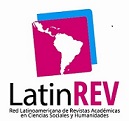Time in Trilce: intersections and coordinates
DOI:
https://doi.org/10.26439/en.lineas.generales2022.n007.5925Keywords:
avant-garde, regional movements, cultural hegemony, modernityAbstract
The main objective of this essay is to explore the emergence of the collection of poems Trilce (1922) as a consequence of a series of elective affinities and changes in the cultural system typical of the time in which its author lived and which allowed him to dialogue originally and creatively with the spirit of his time. Attention is paid, in particular, to the strong influence of regional movements such as the “Norte” group, the formative context of César Vallejo that was in tune with what was happening in places such as the Andean South, far from Lima. In that city, it was paradoxically writers of provincial origin who promoted a Peruvian avant-garde born outside the hegemony and centralism of the country’s capital.
Downloads
References
Aguilar, G. (2002). Vanguardias. En Altamirano, C. (Dir.), Términos críticos de sociología de la cultura (pp. 231-235). Paidós.
Bosshard, M. T. (2014). Churata y la vanguardia andina. Centro de Estudios Literarios Antonio Cornejo Polar; Latinoamericana Editores.
Churata, G. (2012). El pez de oro (H. Usandizaga, Ed.). Cátedra. (Obra original publicada en 1957).
Fernández Cozman, C. (2014). Las técnicas argumentativas y la utopía dialógica en la poesía de César Vallejo. Universidad Ricardo Palma; Editorial Cátedra Vallejo.
Friedrich, H. (1974). Estructura de la lírica moderna. De Baudelaire a nuestros días. Seix Barral.
González Vigil, R. (Ed.). (1999). Poesía peruana. Siglo xx (Tomo I). Ediciones Copé.
Mariátegui, J. C. (1978). Siete ensayos de interpretación de la realidad peruana. Amauta. (Obra original publicada en 1928).
Paz, O. (1974). Los hijos del limo. Del romanticismo a la vanguardia. Seix Barral.
Vallejo, C. (2012). Poesía completa (R. González Vigil, Ed.). Ediciones Copé.
Vallejo, C. (con Chueca, L. F.). (2016). Trilce. Universidad César Vallejo.



